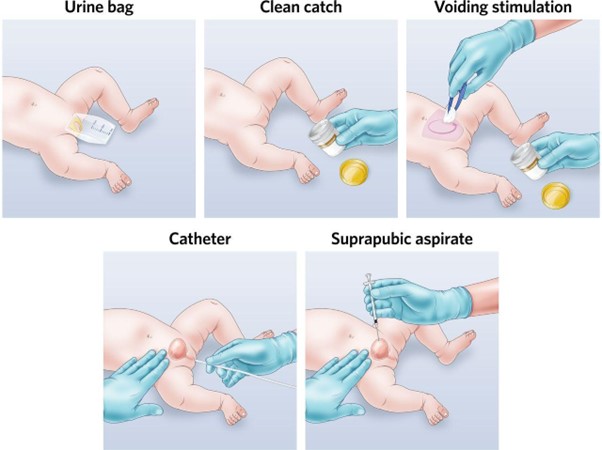A nurse is preparing to catheterize a toddler for a urine culture. Which of the following is an appropriate action for the nurse to take?
Discard the first 10 mL of urine.
Don sterile gloves prior to the procedure.
Obtain a 12-French catheter.
Apply EMLA cream prior to the procedure.
The Correct Answer is B
Choice A reason:
Discarding the first 10 mL of urine is a common practice for obtaining a urine sample for certain tests, but it is not specifically necessary for a urine culture. In a urine culture, the goal is to obtain a sample directly from the bladder to identify any bacteria present, so discarding the initial urine is not necessary.
Choice B reason
Donning sterile gloves prior to the procedure is the appropriate action for the nurse to take. When catheterizing a toddler for a urine culture, it is essential to maintain a sterile procedure to reduce the risk of infection and ensure the safety of the child. Using sterile gloves is a crucial step in preventing contamination during the catheterization process.
Choice C reason
The size of the catheter (12-French) mentioned in option C may not be appropriate for a toddler. The size of the catheter used for a toddler would generally be smaller, depending on the age and size of the child. The appropriate catheter size should be determined based on the child's age and condition.
Choice D reason
EMLA cream is a topical anaesthetic cream used to numb the skin before certain procedures. While it might be appropriate in some cases, it is not typically used for catheterization procedures in toddlers. Catheterization is a quick procedure, and using EMLA cream may not be necessary or practical in this situation.

Nursing Test Bank
Naxlex Comprehensive Predictor Exams
Related Questions
Correct Answer is A
Explanation
A is correct because aPTT (activated partial thromboplastin time) measures the effectiveness of heparin therapy and guides dosage adjustments.
B is incorrect because PT (prothrombin time) measures the effectiveness of warfarin therapy, not heparin.
C is incorrect because INR (international normalized ratio) is a standardized version of PT that also monitors warfarin therapy, not heparin.
D is incorrect because WBC count (white blood cell count) measures the body's immune response and has no relation to heparin therapy.
Correct Answer is A
Explanation
A. Correct. Difficulty performing ADLs such as dressing, grooming, bathing, or feeding may indicate that the client has impaired motor function, sensory perception, or cognitive ability due to the stroke, which can affect their independence and quality of life. Occupational therapy can help the client regain or adapt their skills and abilities for daily living.
B. Incorrect. Inability to swallow clear liquids may indicate that the client has dysphagia or impaired swallowing function due to the stroke, which can increase their risk of aspiration and malnutrition. Speech therapy can help the client improve their swallowing function and provide recommendations for safe oral intake.
C. Incorrect. Elevated blood glucose levels may indicate that the client has diabetes mellitus or impaired glucose metabolism due to the stroke, which can affect their healing and recovery process and increase their risk of complications such as infection or hyperglycemia/hypoglycemia episodes. Diabetes education and management can help the client control their blood glucose levels and prevent adverse outcomes.
D. Incorrect. Unsteady gait when ambulating may indicate that the client has impaired balance, coordination, or muscle strength due to the stroke, which can affect their mobility and safety and increase their risk of falls or injuries. Physical therapy can help the client improve their gait and mobility and provide assistive devices if needed.
Whether you are a student looking to ace your exams or a practicing nurse seeking to enhance your expertise , our nursing education contents will empower you with the confidence and competence to make a difference in the lives of patients and become a respected leader in the healthcare field.
Visit Naxlex, invest in your future and unlock endless possibilities with our unparalleled nursing education contents today
Report Wrong Answer on the Current Question
Do you disagree with the answer? If yes, what is your expected answer? Explain.
Kindly be descriptive with the issue you are facing.
